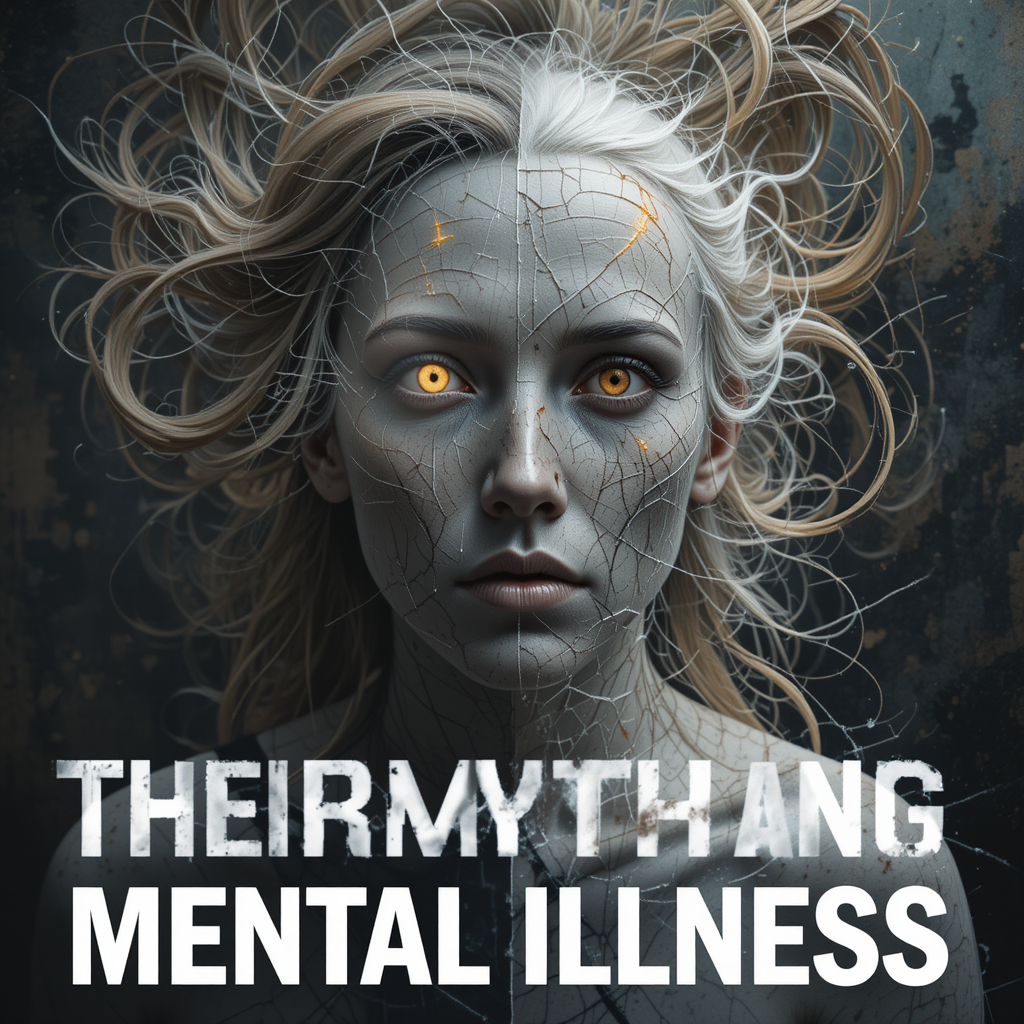Dive deep into 10 pervasive mental health myths that perpetuate stigma and hinder well-being. Discover the truth behind these misconceptions to foster mental illness awareness, promote recovery, and build a truly supportive society.
10 Harmful Mental Health Misconceptions That Perpetuate Stigma
Mental health is an integral part of our overall well-being, yet it remains one of the most misunderstood and stigmatized aspects of human health. Across cultures and communities, pervasive myths about mental illness continue to circulate, fueled by a lack of education, historical prejudice, and sometimes, sensationalized media portrayals. These harmful beliefs do more than just misinform; they actively contribute to mental health stigma, creating barriers that prevent individuals from seeking help, fostering isolation, and undermining efforts to build a truly compassionate and understanding society.
In this comprehensive article, we will meticulously debunk ten of the most damaging mental health myths. By replacing misinformation with facts, we aim to shed light on the realities of mental illness, foster greater mental illness awareness, and pave the way for more effective mental health recovery journeys. Understanding these common mental health myths is the first crucial step towards destigmatizing mental health and ensuring that everyone has access to the psychological support and mental health treatment options they deserve.
Myth 1: Mental Illness Signifies Weakness or a Flawed Character

The deeply ingrained belief that mental illness means you’re weak or broken is arguably one of the most insidious and damaging myths. This misconception suggests that individuals experiencing mental health conditions simply lack willpower, moral fiber, or personal strength. This couldn’t be further from the truth.
Mental illnesses are complex psychological disorders that arise from a multifaceted interplay of genetic predispositions, brain chemistry imbalances, environmental stressors, and personal experiences, including trauma. Just as diabetes is a medical condition affecting the pancreas, or heart disease affects the cardiovascular system, depression impacts mood regulation, anxiety disorders disrupt the nervous system’s response to stress, and bipolar disorder involves significant mood shifts. None of these conditions are a choice, nor are they a reflection of one’s inherent character.
In fact, living with a mental health condition often requires immense emotional resilience and daily courage. The act of acknowledging a struggle, seeking seeking therapy, or pursuing other forms of mental health treatment options demonstrates incredible strength, not weakness. Those who bravely navigate their emotional struggles and work towards recovery are often some of the most resilient individuals. Perpetuating this myth only adds to the burden of shame and secrecy, making it harder for people to reach out and access the mental health support systems vital for their well-being. It reinforces the idea that an invisible mental illness is somehow less valid than a visible physical ailment, a notion we must actively dismantle through comprehensive mental health education.
Myth 2: Therapy Is a Tool for Everyone, Not Just for Crises

Therapy is only for people with serious problems is a pervasive therapy misconception that severely limits access to valuable support. This myth often creates a false dichotomy: either you’re fine, or you’re in crisis and need intensive intervention. The reality is far more nuanced.
Therapy – whether individual, group, or family counseling – serves as a powerful tool for emotional growth and overall wellness. It provides a safe, confidential, and non-judgmental space to explore thoughts, feelings, and behaviors with a trained professional. You don’t need to be at rock bottom to benefit from it. Many people seek therapy for everyday challenges such as stress and anxiety management, improving communication skills, navigating difficult life transitions (like job loss, divorce, or grief), enhancing relationships, or simply fostering greater personal growth and self-awareness.
Think of therapy as a preventative measure or a personal development tool. Just as you might go to the gym to maintain physical fitness or consult a financial advisor for fiscal health, engaging in therapy can proactively support your emotional well-being. It equips individuals with coping strategies, helps them identify unhealthy patterns, and empowers them to make positive changes in their lives. By viewing therapy as a universal resource for self-improvement and resilience-building, we can encourage broader engagement and ensure that individuals don’t wait for a crisis to seek help. This expanded perspective is crucial for destigmatizing mental health and integrating it into our routine self-care practices.
Myth 3: Children Can Experience Mental Health Struggles Too

The outdated belief that children and teenagers do not experience real mental health problems is dangerously misguided. For too long, the emotional pain of young people has been dismissed as “a phase,” “attention-seeking,” or simply “teenage angst.” This pervasive myth ignores the complex developmental stages and unique stressors faced by children and adolescents, leading to delayed diagnoses and missed opportunities for early intervention.
Childhood mental health is a critical area that requires increased awareness and support. Children and teenagers are just as susceptible to conditions like depression, anxiety disorders, ADHD, eating disorders, and trauma-related disorders as adults are. In fact, many adult mental illnesses have their roots in untreated childhood conditions. Factors such as bullying, academic pressure, social media influence, family instability, and adverse childhood experiences can significantly impact their emotional well-being.
The signs of anxiety symptoms or signs of depression in children might manifest differently than in adults – perhaps through irritability, changes in sleep or appetite, declining school performance, or social withdrawal. It is vital for parents, educators, and healthcare providers to be attuned to these indicators and to take them seriously. Early diagnosis and intervention are paramount for positive long-term outcomes. Providing children and adolescents with the necessary mental health support systems and mental health education can help them develop healthy coping mechanisms and prevent more severe issues from developing later in life. Dismissing their struggles only perpetuates a cycle of suffering.
Myth 4: Mental Health Isn’t Something You Can Just ‘Snap Out Of’

The notion that you can simply snap out of a mental health condition is an incredibly invalidating and harmful statement. This myth implies that recovery is merely a matter of willpower, positive thinking, or a strong mindset. It fundamentally misunderstands the biological and psychological underpinnings of mental illness.
Imagine telling someone with a chronic physical illness like diabetes or asthma to “just snap out of it” – it sounds absurd. The same applies to mental health conditions. Conditions like clinical depression, bipolar disorder, or schizophrenia are not simply bad moods or phases; they involve disruptions in brain function, neurotransmitter imbalances, and complex psychological patterns that cannot be willed away. While personal determination and a positive outlook can certainly aid in the mental health recovery process, they are not substitutes for professional treatment options.
This myth places an unfair burden on individuals experiencing mental health challenges, often leading to feelings of guilt, shame, and perceived failure when they cannot “just get better” on their own. It discourages them from seeking necessary help, prolonging their suffering. Effective recovery often involves a multi-faceted approach, including therapy, medication (if appropriate), lifestyle adjustments, and strong mental health support systems. It’s a journey, not an instant fix. Promoting a realistic understanding of recovery paths is essential for fostering empathy and encouraging appropriate care.
Myth 5: Taking Medication Is Not a Personal Failure

The idea that medication is the sole solution for mental health issues is one extreme, but equally harmful is the inverse myth that taking medication is a personal failure. This perspective often stems from a misconception that relying on medication for mental health implies a lack of resilience, character, or an inability to cope naturally.
For many individuals, medication for depression, anxiety, bipolar disorder, or other conditions can be a life-changing, and sometimes life-saving, component of their treatment plan. Psychiatric medications work by addressing imbalances in brain chemistry, similar to how medication helps regulate blood sugar in diabetes or blood pressure in hypertension. They can alleviate severe symptoms, stabilize mood, reduce overwhelming anxiety, and improve cognitive function, allowing individuals to engage more effectively in therapy and other recovery strategies.
Choosing to take medication, in consultation with a qualified healthcare professional, is a responsible and often courageous decision. It is an act of self-care and a proactive step towards managing a medical condition. It is not a sign of weakness or failure. Furthermore, medication is rarely the sole solution; it often works best when combined with psychotherapy, lifestyle changes, and social support. Treatment options are highly individualized, and what works for one person may not work for another. Removing the stigma around medication use is crucial for ensuring that individuals can make informed decisions about their health without fear of judgment.
Myth 6: Mental Illness Doesn’t Always Look the Way You Expect

A dangerous misconception is that mental illness always looks the way you expect, often based on extreme or stereotypical portrayals in media. This leads to the invisibility of many mental health conditions and can prevent individuals from recognizing their own struggles or those of others.
The truth is, invisible mental illness is far more common than the dramatic depictions often seen on screens. Many people living with conditions like anxiety, depression, OCD, or eating disorders may appear perfectly functional on the surface. They might hold down jobs, maintain relationships, and engage in social activities, all while silently battling intense inner turmoil. Their internal experience might be one of overwhelming sadness, persistent worry, obsessive thoughts, or debilitating self-criticism, yet they learn to mask these emotional struggles to navigate daily life and avoid stigma.
This myth makes it difficult for people to empathize with someone who doesn’t fit a narrow, stereotypical image of “mental illness.” It can lead to dismissive attitudes like “they look fine to me” or “what do they have to be sad about?” Understanding that mental health conditions manifest in myriad ways, and that outward appearance doesn’t always reflect internal reality, is critical for fostering genuine compassion and recognizing the need for support, even when it’s not immediately apparent. Promoting mental illness awareness requires challenging these visual stereotypes and embracing the diversity of human experience.
Myth 7: The Myth of Violence and Mental Illness

One of the most persistent and damaging myths is the association between mental illness and violence, often perpetuated by sensationalized media coverage. The belief that people with mental illness are inherently dangerous or unpredictable fuels fear, discrimination, and deep-seated stigma.
The reality is that the vast majority of individuals with mental health conditions are not violent. In fact, research consistently shows that people with severe mental illness are far more likely to be victims of violence than perpetrators. When violence does occur, it is usually a complex issue influenced by multiple factors such as substance abuse, socioeconomic disparities, and a history of violence, rather than mental illness alone. Furthermore, individuals receiving appropriate mental health treatment options are even less likely to engage in violent behavior.
This harmful stereotype leads to increased social isolation, discrimination in employment and housing, and reluctance among the public to interact with or support those struggling with mental health. It also deters individuals from seeking help for fear of being labeled as dangerous. Challenging this myth is crucial for fostering an inclusive society where individuals with mental health conditions are treated with dignity and respect, and where the focus is on providing comprehensive mental health support systems rather than perpetuating unfounded fears.
Myth 8: Talking Openly About Mental Health Helps, Not Harms

A common fear that acts as a significant barrier to help-seeking is the belief that talking about mental health problems attracts unwanted attention or makes things worse. This myth thrives in environments where mental health dialogue is stifled and stigma is high.
However, the truth is that open communication about mental health is profoundly beneficial, not harmful. Suppressing emotional struggles can lead to increased isolation, worsening symptoms, and a delay in receiving necessary support. Speaking openly about your experiences can be incredibly liberating. It allows you to process your feelings, gain new perspectives, and realize that you are not alone in your struggles. It also provides an opportunity for others to offer empathy, support, and resources.
Initiating a mental health dialogue helps to normalize these conversations, chipping away at the stigma that surrounds mental illness. When public figures, friends, family, and colleagues share their stories, it creates a ripple effect, encouraging others to do the same. This open communication is a cornerstone of effective mental health support systems and mental health education. It fosters an environment where individuals feel safe to admit they need help, leading to earlier intervention and better outcomes for mental health recovery. The more we talk, the more we heal, both individually and collectively.
Myth 9: Mental Health Challenges Are Often Manageable and Treatable

The misconception that individuals with mental illness cannot lead fulfilling lives is a deeply disheartening and inaccurate belief. This myth often stems from a lack of understanding about the effectiveness of modern treatment options and the incredible resilience of the human spirit.
With the right psychological support and tailored mental health treatment options, including therapy, medication (where appropriate), lifestyle adjustments, and strong social networks, individuals living with mental health conditions can, and very often do, lead meaningful, productive, and joyous lives. They pursue education, build successful careers, form loving relationships, raise families, and contribute significantly to their communities. Recovery is not just possible; it is a common and achievable outcome for many.
This myth is harmful because it perpetuates a sense of hopelessness, not just for those experiencing mental illness but also for their loved ones and society at large. It can lead to self-limiting beliefs and a reluctance to invest in mental health support systems or research. By focusing on the potential for recovery and highlighting the successes of individuals who manage their conditions effectively, we can inspire hope and empower people to seek the help that can transform their lives. Emphasizing that mental health challenges are often manageable and treatable is key to a more optimistic and reality-based perspective.
Myth 10: Why Busting These Myths Matters for a Healthier Society

Finally, the belief that ignoring mental health problems will make them disappear is a dangerous form of denial that perpetuates unnecessary suffering. This passive approach often leads to worsening conditions, increased distress, and more complex challenges down the line.
Mental health issues, much like physical ailments, rarely resolve on their own without appropriate attention and care. In fact, untreated mental health conditions can escalate, leading to chronic suffering, impaired functioning in daily life, substance abuse, and even higher risks of suicide. Early identification and intervention are consistently linked to better outcomes and more effective mental health recovery.
Busting this myth, and all the others discussed, is fundamentally about fostering a healthier and more compassionate society. When we challenge common mental health myths, we:
- Reduce Stigma: By providing accurate information, we dismantle the shame and discrimination associated with mental illness, making it easier for people to seek and receive help.
- Encourage Help-Seeking: When mental health conditions are understood as legitimate health issues, individuals are more likely to reach out to professionals for psychological support and treatment options.
- Promote Empathy and Understanding: Education fosters compassion, helping individuals to support their friends, family, and colleagues who may be struggling with invisible mental illness or other emotional struggles.
- Improve Public Health: Addressing mental health openly and effectively leads to better overall public health outcomes, reducing the societal and economic burden of untreated conditions.
- Build Resilient Communities: A society that prioritizes mental health education and access to mental health support systems is one that is more resilient, productive, and equitable for all its members.
- Here are some Frequently Asked Questions (FAQs) about the article “10 Harmful Mental Health Misconceptions That Perpetuate Stigma”
Frequently Asked Questions (FAQs) about Mental Health Myths
Q1: What is the main purpose of the article “10 Harmful Mental Health Misconceptions That Perpetuate Stigma”?
A1: The main purpose of the article is to debunk common and harmful myths about mental health, foster greater mental illness awareness, reduce stigma, and encourage individuals to seek necessary support and treatment for their mental well-being.
Q2: Does the article suggest that mental illness is a sign of weakness or a character flaw?
A2: Absolutely not. The article strongly debunks this myth, stating that mental illnesses are complex medical conditions influenced by genetic, biological, psychological, and environmental factors, not a reflection of personal weakness or character.1 Seeking help for a mental health condition is presented as a sign of strength.
Q3: Is therapy only for people experiencing severe mental health crises, according to the article?
A3: No, the article clarifies that this is a misconception. Therapy is presented as a valuable tool for everyone, beneficial for managing everyday stress, improving relationships, navigating life transitions, and fostering personal growth, not just for severe problems.2
Q4: Can children and teenagers really experience genuine mental health problems?
A4: Yes, the article emphasizes that children and teenagers are just as susceptible to mental health conditions as adults, and many adult mental illnesses have their onset in youth. Dismissing their struggles is a grave mistake that can lead to delayed diagnoses and negative long-term consequences.
Q5: According to the article, can someone just “snap out” of a mental health condition if they try hard enough?
A5: No, the article explicitly refutes this idea. It explains that mental illnesses are not simply matters of willpower and cannot be willed away. They involve complex biological and psychological factors that require understanding, support, and often professional intervention.3
Q6: Does the article state that taking mental health medication is a sign of personal failure?
A6: The article directly challenges this harmful myth. It asserts that taking medication, when prescribed by a professional, is often a crucial and effective component of treatment for many conditions, and it is a responsible act of self-care, not a sign of failure.
Q7: Do all mental illnesses manifest in obvious ways that are easy to spot, according to the article?
A7: No. The article highlights that many mental health conditions are “invisible,” meaning individuals can appear functional on the surface while battling significant internal struggles. It stresses that outward appearance doesn’t always reflect internal reality.
Q8: Does the article suggest that people with mental illness are inherently dangerous?
A8: This is a harmful stereotype that the article strongly debunks. It states that the vast majority of individuals with mental health conditions are not violent and are more likely to be victims of crime than perpetrators, challenging media sensationalism.4
Q9: Is it better to keep quiet about mental health problems to avoid attracting “unwanted attention”?
A9: The article argues against this, stating that talking openly about mental health is profoundly beneficial. Suppressing emotions can worsen symptoms, while open communication fosters support, reduces isolation, and chips away at stigma.5
Q10: Can individuals with mental health challenges lead fulfilling and productive lives?
A10: Absolutely. The article emphasizes that with appropriate treatment, support, and self-management strategies, individuals with mental health conditions can, and often do, lead meaningful, productive, and happy lives, pursuing education, careers, and relationships.
Q11: Why is it important to debunk these mental health myths, according to the article’s conclusion?
A11: Debunking these myths is crucial for creating a healthier society. It reduces stigma, encourages help-seeking, promotes empathy, improves public health outcomes, and helps build more resilient and equitable communities where mental health is valued and supported for all.
